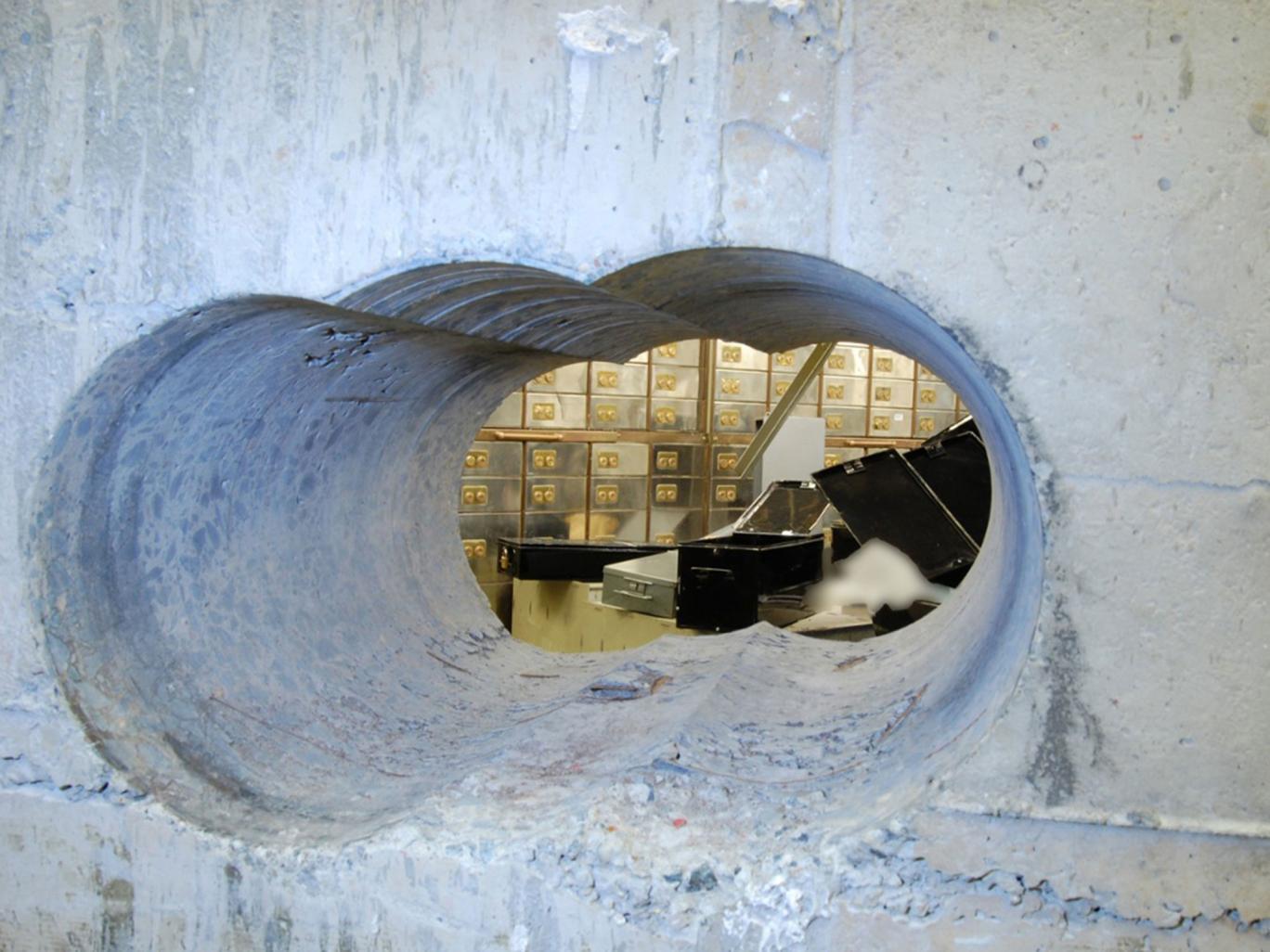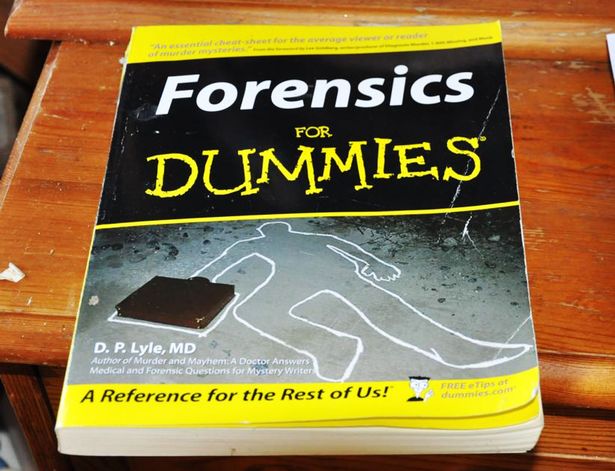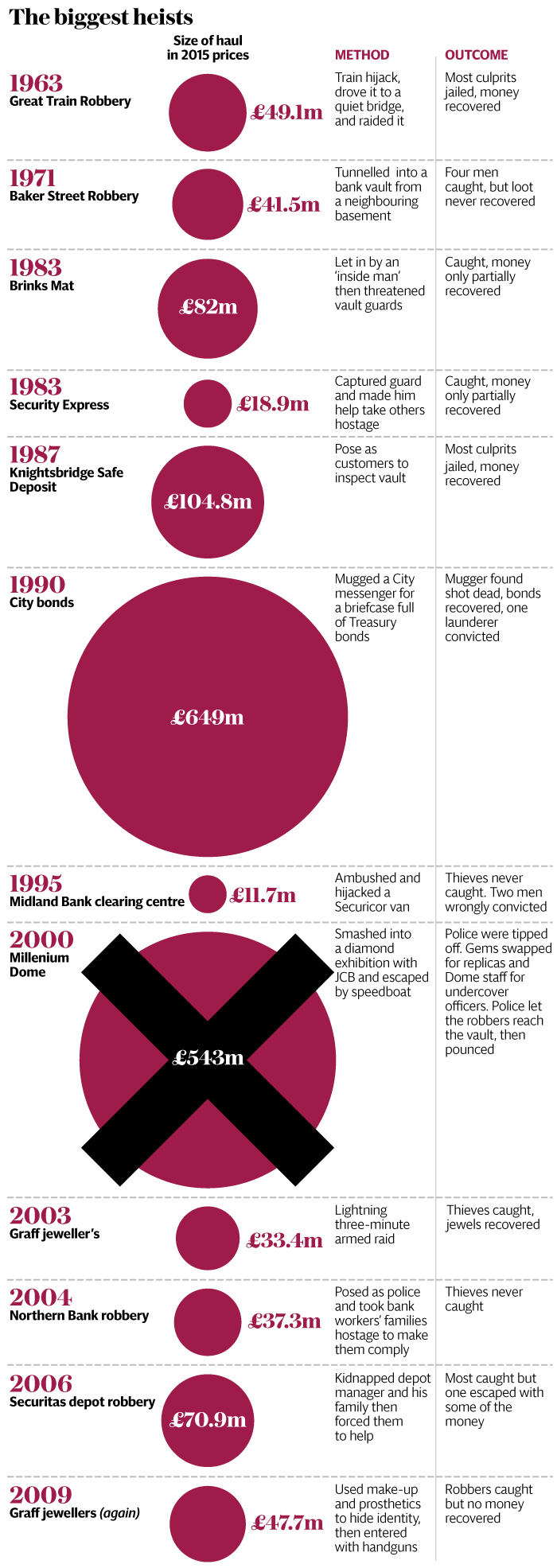
I was tempted to blog about Bitcoin 3.0 this morning, but Marcus Swanepoel has already done that – news of Bitcoin’s death has been overstated - so I thought I’d blog about robbery instead. Daylight robbery is far more exciting than investing in the future after all, and there has been a big case over here about a good old fashioned heist that took place last Easter in Hatton Cross. If you’re not aware of it, the gist of the case is that over the Easter 2015 weekend, a gang of thieves broke through a thick wall into the safe boxes of London’s most elite jewellers and stole up to £25 million worth of gold, silver and other collectibles and cash (originally the newspapers said up to £200 million, but this was rationalised in court). They achieved this by climbing down a lift shaft before drilling through a concrete wall before escaping with the jewels.
It’s a classic old robbery which gained notoriety as not only one of the largest and most audacious raids in British history, but also the fact that the gang were inside the building whilst police ignored an alarm that could have caught the guys in the act.
Nevertheless, after such embarrassment, the police did a good job and arrested nine men a month later. Again, it’s been an intriguing case, as of the nine arrested, three are old age pensioners (OAPs) and the gang have a combined age of being 442 years old, or an average age of 63. Did I say it’s a classic OLD robbery?
Their crimes were played out in court just before Christmas and most were found guilty this week:
- Ringleaders Brian Reader, 76, Terry Perkins, 67, Daniel Jones, 58 and Kenny Collins, 75, admitted conspiring to commit burglary from the start;
- Carl Wood, 58, and William Lincoln, 60, were found guilty of the same charge by a jury following a trial;
- Hugh Doyle, 48, was found guilty of conspiracy to conceal, convert or transfer criminal property; whilst
- Jon Harbinson, 42, was cleared of all charges.
The robbery was planned over three years, starting in 2012 when gang leaders brought the book Forensics for Dummies (no, I’m not making this up).
By May 2014, the planning had become far more specific, with the gang spending hours researching tools like the Hilti DD350 drill used to hollow out three large holes in the thick, concrete of the safety wall.
In January 2015, they started watching 88-90 Hatton Gardens, the target for the raid that occurred in April over three days during Easter.
So how come they got caught so quickly in May? After all, during the trial, prosecuting counsel Philip Evans pointed at the ringleaders saying: “these four... brought with them a great deal of experience in planning and executing sophisticated and serious acquisitive crime." These weren’t some young punk upstarts, but seasoned criminals who knew what they were doing. But maybe that’s why they were caught. After all, some of this reads like a comedy script.
The main players were caught out as they boasted of their exploits during a drinking session at the Castle pub in Islington. Undercover officers filmed Terry Perkins as he enthusiastically demonstrated to Brian Reader how they smashed their way into the vault, as Kenny Collins looked on. The footage was recorded less than a month after the heist.
During the raid itself, it turns out, John Collins fell asleep while acting as a lookout, and later seemed partially deaf in court. Terrence Perkins was recorded by police complaining about his medicine regime and boasting that the haul “could be his pension”. Bill Lincoln was left out of the raid due to bladder problems and wet himself while in police custody. The oldest gang member was Brian Reader, dubbed “the Master” or “the guv’nor” by his colleagues. On the first day of the raid he rode to Hatton Garden using a borrowed over-60s travel card.
More than this, the old style gang were up against new style digital detectives. For example, how did the police know the gang met at the Castle pub? Easy. The planning proper began at Islington’s Castle pub in mid-January and, using mobile phone and vehicle-tracking data, police were able to establish that ringleaders Jones, Collins and Perkins were meeting there, usually on busy Friday nights. Jones would usually call Wood the next day to keep him updated on their plans.
The police were further assisted by the fact the jewel safe had more sophisticated alarm systems and CCTV, as well as being able to use other supporting forensic developments, such as DNA analysis and facial recognition software. One of the reasons the Hatton Garden burglars were caught is because they missed a single CCTV camera in the alley behind the building. Then there are physical alarm devices: motion sensors, window monitors which detect glass shattering, or devices which trigger when a door is opened.
Other things have changed too. For example, one of the largest robberies before this one was the Brinks Mat bullion robbery in 1983 when £82 million was stolen. A famous story about the Brinks Mat case is that £500,000 in cash was taken into a bank in the City of London, worth around £1.5 million today. The cash was placed on the bank branch counter and the teller given instructions to send it to a bank account in Lichtenstein. Back then, the bank would only have said, ‘do you want a receipt with that?’ Today, this would be nigh impossible thanks to money laundering regulations as the bank and its management would be criminally liable for any fraudulent transaction.
This is why physical crime such as this case, is a dying art in the digital age. It’s no longer robbing bank branches “because that’s where the money is” but robbing bank websites “because that’s where the money is”. For example, the rate of bank robberies as tracked by the British Bankers’ Association dropped from 847 in 1992 to just 66 in 2011. Something similar has happened in the USA, where bank robberies fell 60% between 2004 and 2014.
On the other hand, crime in the internet age should be getting easier. Google Maps lets you surf and find hundreds of potential targets while online directory services, such as TraceSmart, use the electoral register to match names to addresses. There’s also the big change from social media as people post information on Facebook and LinkedIn which can easily be used to put pressure on them. If an employee is living a lifestyle which makes them vulnerable to blackmail, that’s great for a criminal.
Similarly, clever malware and viruses are reaping rewards. Mikko Hyponnen, chief research officer of Helsinki-based security firm F-Secure, reports that cybercriminals using CryptoWall ransomware version 3 have collectively cleared a cool $325 million. The figure could be higher because it represents only the ill-gotten CryptoWall gains that authorities have been able to trace (see Ransomware: Are We in Denial?). There are certainly a few folks who are seeing Cybercrime Unicorns out there, and this can only be set to rise.
Blockchain traffic shows that some cybercrime gangs have made hundreds of millions of dollars. Do we already have Cybercrime Unicorns?
— Mikko Hypponen (@mikko) January 13, 2016
So, in some ways it’s sad to see the Granddad Gang being locked up for committing a good old analogue crime. In other ways, it’s sad to realize that the biggest physical heist in British history was $1 billion in bonds in 1990 followed by just $150 million in 1987.
Compared with the idea that we’re now seeing multiple Cybercrime Unicorns reaping billions in stolen data, maybe the old analogue age wasn’t so bad after all.
If you want to know more about the Hatton Cross crime, these articles are particularly good and provided the basis for much of the above coverage:
Hatton Garden heist timeline: The full details of how crooks pulled off the most daring robbery ever
Is it still possible to get away with a heist?
Chris M Skinner
Chris Skinner is best known as an independent commentator on the financial markets through his blog, TheFinanser.com, as author of the bestselling book Digital Bank, and Chair of the European networking forum the Financial Services Club. He has been voted one of the most influential people in banking by The Financial Brand (as well as one of the best blogs), a FinTech Titan (Next Bank), one of the Fintech Leaders you need to follow (City AM, Deluxe and Jax Finance), as well as one of the Top 40 most influential people in financial technology by the Wall Street Journal's Financial News. To learn more click here...




